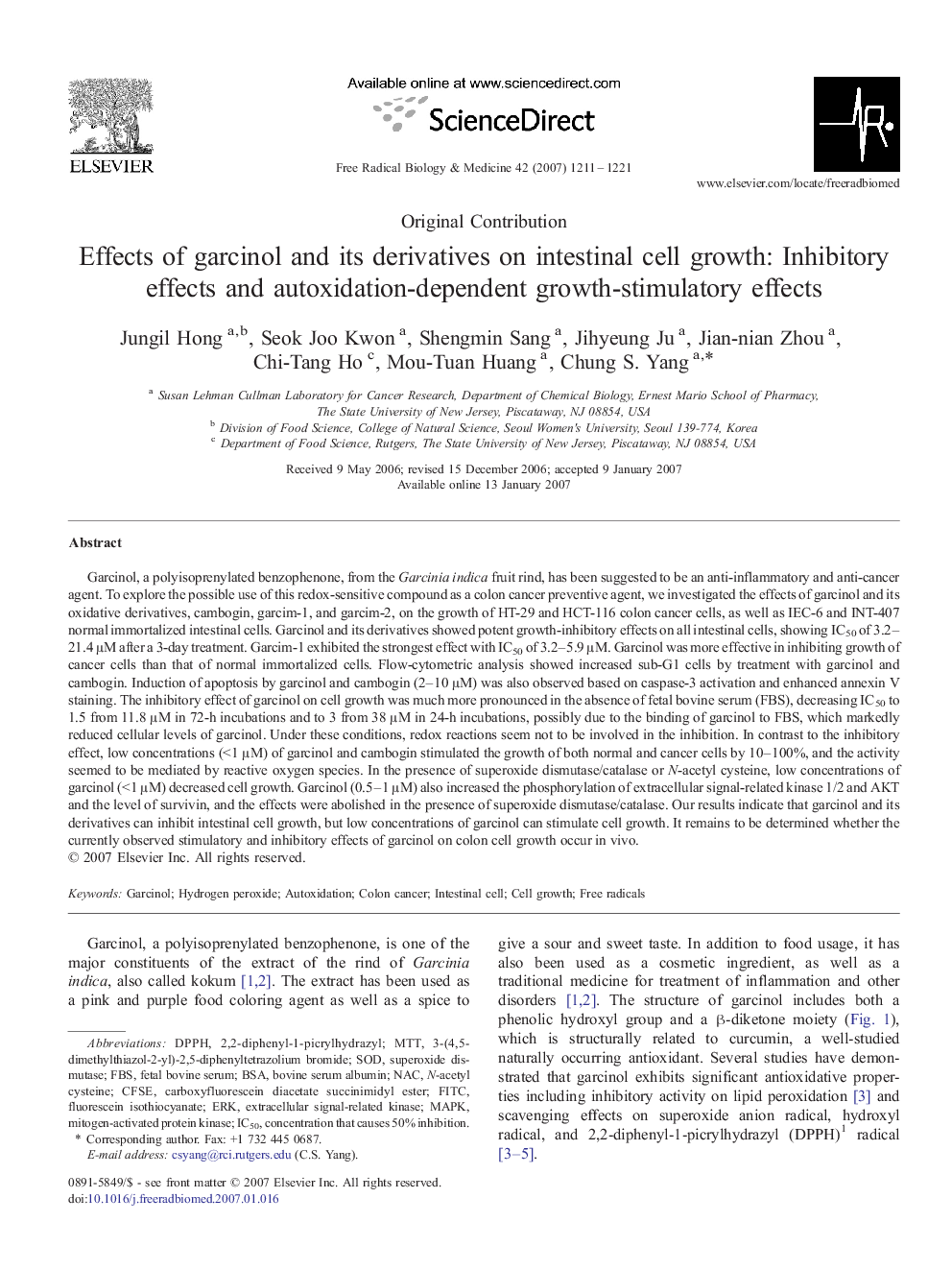| کد مقاله | کد نشریه | سال انتشار | مقاله انگلیسی | نسخه تمام متن |
|---|---|---|---|---|
| 1911442 | 1046817 | 2007 | 11 صفحه PDF | دانلود رایگان |

Garcinol, a polyisoprenylated benzophenone, from the Garcinia indica fruit rind, has been suggested to be an anti-inflammatory and anti-cancer agent. To explore the possible use of this redox-sensitive compound as a colon cancer preventive agent, we investigated the effects of garcinol and its oxidative derivatives, cambogin, garcim-1, and garcim-2, on the growth of HT-29 and HCT-116 colon cancer cells, as well as IEC-6 and INT-407 normal immortalized intestinal cells. Garcinol and its derivatives showed potent growth-inhibitory effects on all intestinal cells, showing IC50 of 3.2–21.4 μM after a 3-day treatment. Garcim-1 exhibited the strongest effect with IC50 of 3.2–5.9 μM. Garcinol was more effective in inhibiting growth of cancer cells than that of normal immortalized cells. Flow-cytometric analysis showed increased sub-G1 cells by treatment with garcinol and cambogin. Induction of apoptosis by garcinol and cambogin (2–10 μM) was also observed based on caspase-3 activation and enhanced annexin V staining. The inhibitory effect of garcinol on cell growth was much more pronounced in the absence of fetal bovine serum (FBS), decreasing IC50 to 1.5 from 11.8 μM in 72-h incubations and to 3 from 38 μM in 24-h incubations, possibly due to the binding of garcinol to FBS, which markedly reduced cellular levels of garcinol. Under these conditions, redox reactions seem not to be involved in the inhibition. In contrast to the inhibitory effect, low concentrations (<1 μM) of garcinol and cambogin stimulated the growth of both normal and cancer cells by 10–100%, and the activity seemed to be mediated by reactive oxygen species. In the presence of superoxide dismutase/catalase or N-acetyl cysteine, low concentrations of garcinol (<1 μM) decreased cell growth. Garcinol (0.5–1 μM) also increased the phosphorylation of extracellular signal-related kinase 1/2 and AKT and the level of survivin, and the effects were abolished in the presence of superoxide dismutase/catalase. Our results indicate that garcinol and its derivatives can inhibit intestinal cell growth, but low concentrations of garcinol can stimulate cell growth. It remains to be determined whether the currently observed stimulatory and inhibitory effects of garcinol on colon cell growth occur in vivo.
Journal: Free Radical Biology and Medicine - Volume 42, Issue 8, 15 April 2007, Pages 1211–1221